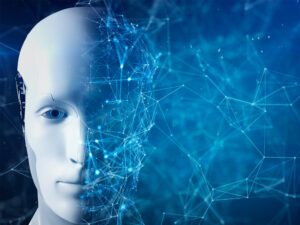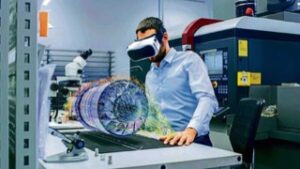 “Deep learning is not just about building intelligent machines, it’s about building machines that can learn to build themselves.” – Yann LeCun, Chief AI Scientist at Facebook and Deep Learning Pioneer.
“Deep learning is not just about building intelligent machines, it’s about building machines that can learn to build themselves.” – Yann LeCun, Chief AI Scientist at Facebook and Deep Learning Pioneer.
Imagine a world where computers can understand and think just like us humans. A world where they can recognize images, comprehend language, and make decisions, all on their own. This may sound like science fiction, but thanks to a subset field in AI, called Deep Learning, this possibility is becoming closer to reality.
Welcome to another series of blogs by Rucha Yantra which focuses on Deep Learning and its impact on manufacturers. In the first blog, we will delve into the fascinating realm of deep learning, exploring what it is, how it works, and its potential implications for the future.
Let’s start at the basics
Deep Learning is a subset of Artificial Intelligence (AI) that focuses on teaching computers to learn and make decisions by mimicking the way our brains process information. At its core, Deep Learning is inspired by the structure and functionality of neural networks, the complex web of interconnected cells that form the foundation of our thought processes.
![]()
Deep learning came about through decades of research and development in the field of AI. At first, on the journey to imitate the functionality of the brain, they created artificial neural networks. The tools and technology needed to create and maintain this function weren’t up to standards yet, the technology was old and slow. A significant breakthrough came in the 1980s when researchers developed the backpropagation algorithm. This algorithm enabled efficient training of neural networks with multiple layers, which are called deep neural networks. With deep neural networks, it became possible to learn and recognize more complex patterns and features from data.
In the 2000s, deep learning gained more attention with the development of Deep Belief Networks (DBNs) by Geoffrey Hinton and his colleagues. DBNs allowed for unsupervised pre-training of deep neural networks, which helped overcome the challenge of training deep architectures.
The vision of building machines that could build themselves certainly started coming true here.
How does Deep Learning work?
Deep Learning algorithms are designed to learn directly from large amounts  of data, enabling computers to recognize patterns, make predictions, and perform tasks with remarkable accuracy. These algorithms consist of artificial neural networks composed of layers of interconnected nodes, also known as artificial neurons.
of data, enabling computers to recognize patterns, make predictions, and perform tasks with remarkable accuracy. These algorithms consist of artificial neural networks composed of layers of interconnected nodes, also known as artificial neurons.
Artificial Neurons:
To better understand deep learning, let’s imagine an artificial neuron as a simplified version of the neurons in our brains. Each artificial neuron receives inputs, performs computations on those inputs, and produces an output. These inputs are weighted, meaning their importance is determined by the strength of their connection to the neuron. The neuron applies an activation function to the weighted sum of its inputs to produce an output.
Deep Learning: A Must-have for Businesses:
Deep learning has revolutionized various industries, and its applications in the business sector are particularly noteworthy. Businesses generate vast amounts of data every day, and deep learning algorithms can unlock valuable insights from this data. By analyzing customer behavior, market trends, and operational data, companies can make data-driven decisions, improve efficiency, and gain a competitive edge.
For instance, deep learning algorithms can be used to develop recommendation systems, enabling businesses to offer personalized product suggestions to customers. They can also be employed for fraud detection, natural language processing, image and speech recognition, and predictive analytics. The ability to process and understand large volumes of data quickly and accurately makes deep learning an indispensable tool for businesses of all sizes.
Conclusion:
Deep learning, a powerful branch of AI, brings us closer to the dream of computers that can think and learn like humans. By mimicking the structure and functioning of the human brain, deep learning algorithms process vast amounts of data to make predictions and decisions. With its ability to uncover patterns and insights from complex data, deep learning has become a game-changer in the business sector. As this technology continues to advance, we can expect even more exciting developments and opportunities in the future.
Stay tuned to Rucha Yantra’s Knowledge Corner as we go deeper into the world of Deep Learning in the upcoming blogs. Coming up in our next blog are some of the most exciting applications of Deep Learning.



